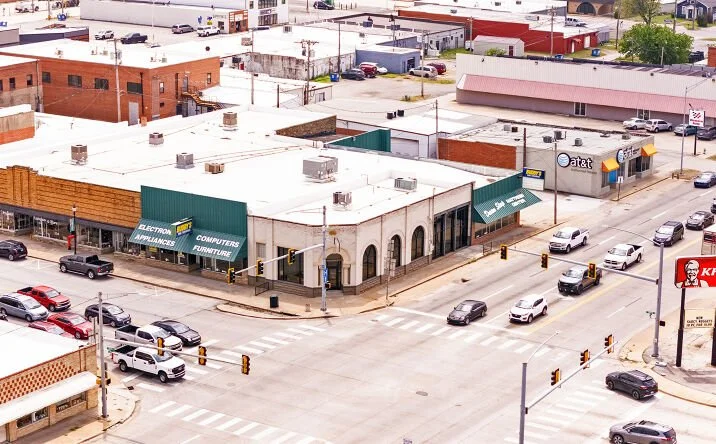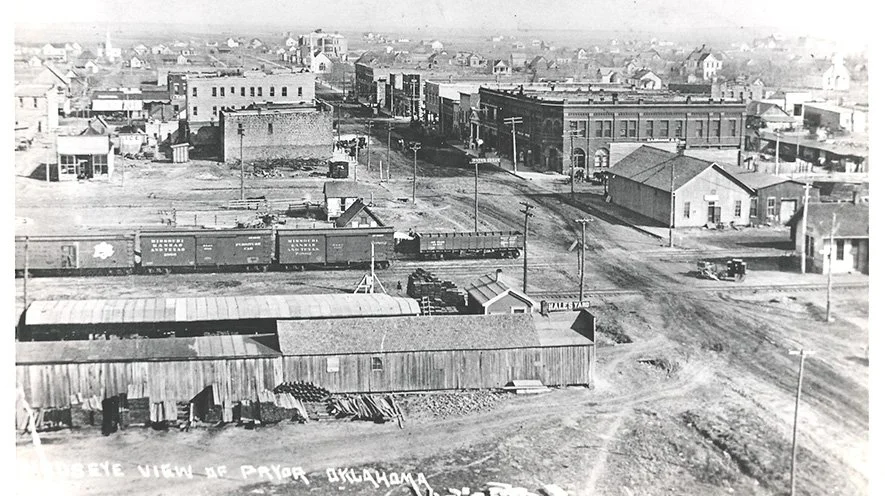Our History
Preserving the Past for the Future
Today, visitors can explore this history through resources like the Time Frame App and the Coo-Y-Yah Museum, which chronicle Pryor’s evolution from a railroad town to a thriving Main Street community. Historic buildings, many with mid-century architectural charm, still line the streets, offering a tangible connection to the city’s past.
Pryor Main Street continues to lead efforts to preserve these landmarks while encouraging investment, supporting small businesses, and hosting events that draw thousands downtown each year. By honoring its rich heritage — from the Coo-Y-Yah name to the legacy of early entrepreneurs — Pryor Main Street ensures that downtown remains both a reflection of the past and a beacon for the future.
Pryor Main Street is the Coo-Y-Yah District
Downtown Pryor has long been a hub of commerce, culture, and connection. In 2024, the district was officially named the Coo-Y-Yah District, a nod to the Cherokee word for huckleberry and the original name of Pryor. This designation reflects both the area’s deep Native American roots and the community’s commitment to preserving its authentic history.
The Coo-Y-Yah District is more than just a name — it is a living reminder of the people and events that shaped Pryor. Graham Avenue, the district’s main thoroughfare, was once recognized as the widest Main Street in Oklahoma, a testament to the city’s bold vision for growth in the early 20th century. Much of downtown’s architecture and street layout can be traced back to the influence of local business tycoons such as W.H. Graham, O.D. Mayor and the development brought by the Katy Railroad and the historic Jefferson Highway, which connected communities from Canada to New Orleans.
Triumphs and Trials
Downtown Pryor’s history includes moments of both prosperity and hardship. On April 27, 1942, a devastating tornado struck the heart of the community, destroying much of the business district and leaving a lasting mark on the town’s identity. The rebuilding that followed demonstrated the resilience of Pryor’s citizens, who worked tirelessly to restore the downtown area and keep it the commercial and cultural center of the region.


